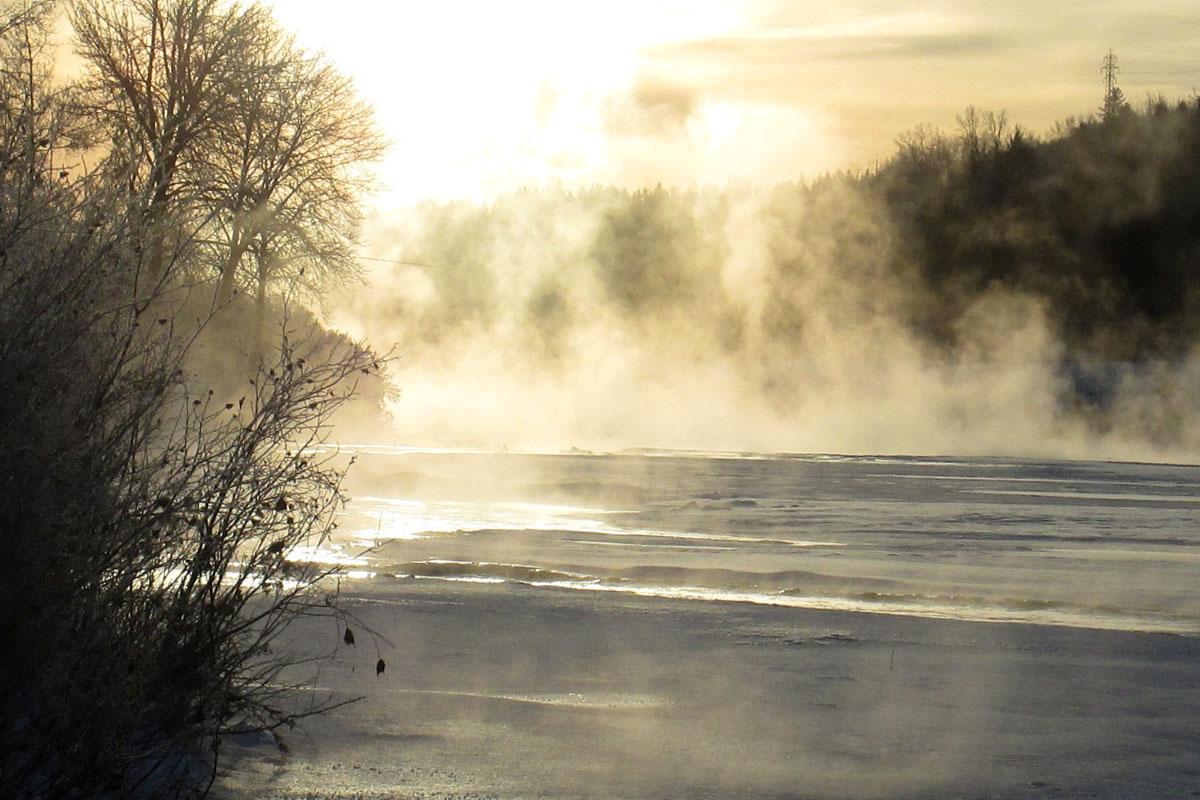Y: Come outside, Don.
D: Are you kidding me, Yael? It's below zero.
Y: Exactly. It might be cold enough for pogonip.
D: Pogo what?
Y: Pogonip is a Native American word for ice fog. It means white death.
D: Something called white death is supposed to entice me to subject myself to well below freezing temperatures? Why don't you just tell me about ice fog? I'll imagine it.
Y: Ice fog is fog composed of tiny frozen crystals of ice, causing it to shimmer.
D: If ice fog is special just because it has ice in it, couldn't we find ice fog in more bearable weather conditions like say thirty degrees Fahrenheit? That's still below freezing.
Y: Yes, but ice fog requires bitter cold temperatures. It's a rare phenomenon unless you live near the Arctic or Antarctic regions, such as in northern Alaska. Unlike liquid in contact with surfaces, liquid precipitation, whether falling as rain or suspended in a cloud, can remain liquid in well below freezing temperatures. In fact, only at negative forty degrees will all suspended liquid freeze into ice.
D: Yikes. Any other requirements besides bitter cold?
Y: Fog is generally created by moisture evaporating from the Earth's surface. As this moisture rises, it cools and condenses into what is, in effect, a cloud. Moist air traveling horizontally over cooler surfaces can also contribute to ice fog. In addition, in circumstances where warm air lies atop cold air, it can trap the evaporating moisture close to the earth's surface, also causing ice fog. Finally, a good ice fog requires a little bit of a breeze to stir the air and really make the ice shimmer and sparkle.
D: Sounds like something. Take a photo for me, will you?
Y: Sure, Don.









